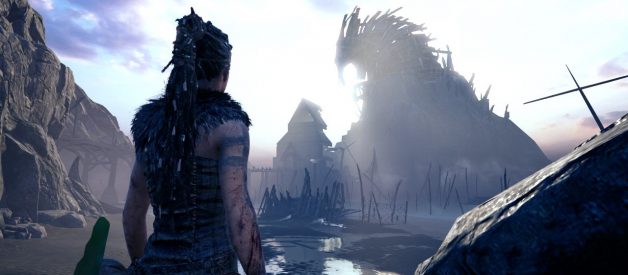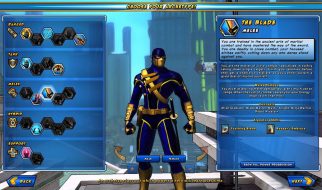It?s one of the best-looking games regardless of platform
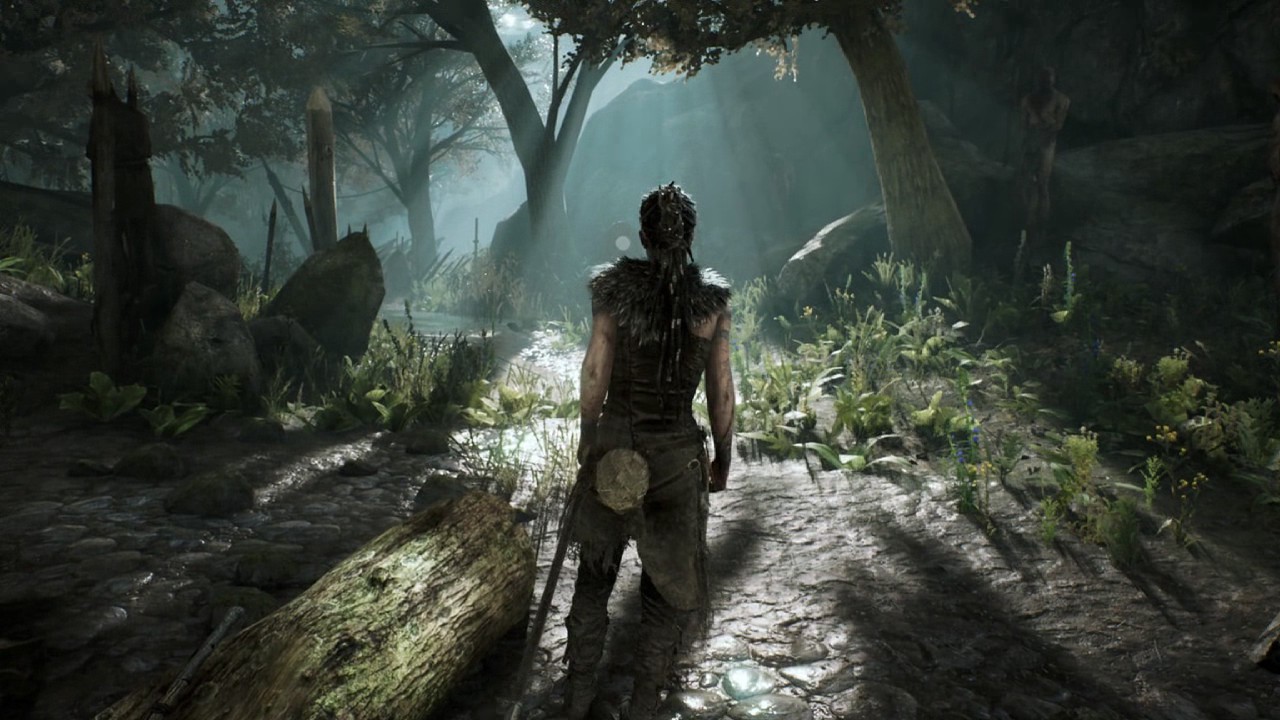 Nintendo Switch screenshot taken by Alex Rowe.
Nintendo Switch screenshot taken by Alex Rowe.
This review is free of story spoilers, as discussing the plot too much would ruin some of the best of what this game has to offer.
I?ve been meaning to finish Hellblade: Senua?s Sacrifice since its launch in 2017 on PS4. Ninja Theory?s lower-budget action/adventure game was hailed by critics as a masterpiece of quality game design and performance capture. Since then, it?s come to PC, Xbox, and most recently the Nintendo Switch. Microsoft bought the development studio. And then, it had a sequel announced at the 2019 Game Awards for the new Xbox Series X.
Okay fine, no more excuses. I bought it on the Switch, downloaded it, played it over two days?and then promptly loaded it up a second time on the PC thanks to Game Pass to give it another go.
If you?re looking for a mash-up of class-leading graphics and sound design, intuitive timing-based combat, and well-paced storytelling that?ll last you about six hours, then you?ve come to the right place.
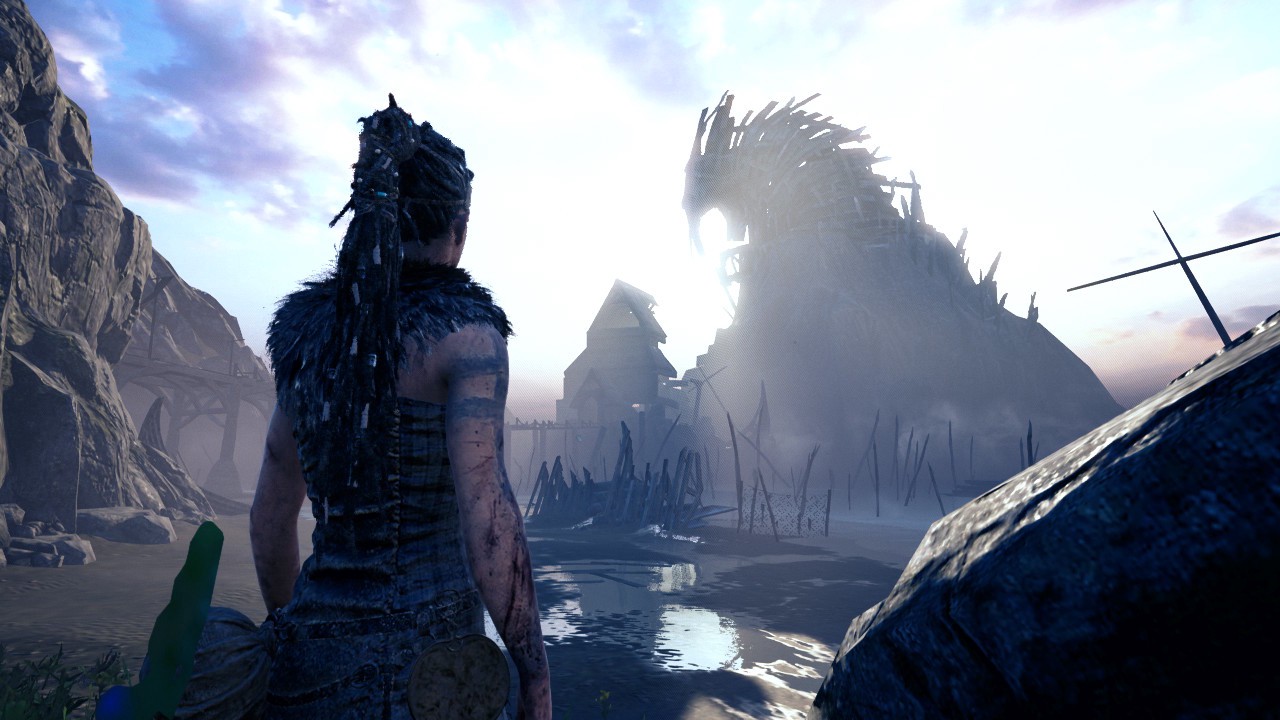 Nintendo Switch screenshot taken by Alex Rowe.
Nintendo Switch screenshot taken by Alex Rowe.
OVERVIEW
I?ve loved Ninja Theory?s games since their 2007 PS3 title Heavenly Sword. When I first heard the name ?Hellblade,? and saw some of the designs, it felt to me like they were trying to make a sequel to that game without getting sued by Sony, who still own that older IP.
In practice, that turns out to be half-right. Hellblade, like Heavenly Sword, is an action/adventure title that prominently features a strong female character and various edged weapons. However, Hellblade is much more focused and nuanced in its design, and much less a pretty clone of God of War.
You?ll take on the role of Senua, and for a seamless stretch of six to seven hours, you won?t leave her side. Most of the game is composed of long, unbroken camera shots. On the ?bigger? consoles this is achieved through full real-time rendering of both the gameplay and the story scenes. On the more memory-constrained Switch the game cleverly dissolves between real-time gameplay and pre-rendered videos for some of the cutscenes to hide loading. Regardless of your chosen system, if you play the game without stopping you?ll get one continuous experience.
Senua suffers from psychosis, which manifests throughout the game as various visual and auditory experiences. These were apparently developed alongside a whole host of medical experts in order to make them authentic. This aesthetic and storytelling decision clashes a bit stylistically with the Viking-era setting and the fantasy tropes on display, but the emotional moments resonate every time.
 Nintendo Switch screenshot taken by Alex Rowe.
Nintendo Switch screenshot taken by Alex Rowe.
The gameplay is a masterfully-paced back-and-forth progression of action sequences and light puzzling. Some of the reviews at launch complained that the combat is too simple, but I really enjoyed it. There are three different attack buttons, a block, and a dodge, and all of them link together well into dynamic combos thanks to a variety of fluid motion-captured animations. The sword strikes you can perform look real and hit hard. Animations and effects work both provide ample feedback about how much damage you?ve done to the game?s monsters, so combat feels consistently fun.
Some of the boss fights feel a little bit grindy, with large enemies that take too many hits to defeat, but outside of that one complaint I enjoyed every combat encounter in the game.
I was skeptical of the puzzle design at first, but it won me over. Most of the puzzles in the game involve finding large rune shapes that are hidden in the environment to unlock giant doors and make progress. But the game cleverly mixes this up over and over again, and makes great use of portals in some of the later designs a la the Portal franchise or the original Prey. The puzzles strike a good balance between challenge and making you feel smart, and none of them pass the frustration threshold.
STORY
The story in Hellblade weaves directly into the gameplay through the use of an ever-present narrator, whose mysterious voice is justified in the story by Senua?s psychosis. The tale is rife with both historically-based mythological lore and fundamental human emotions that are relevant to the modern experience of life.
It also gets downright spooky at several points, with a horror movie tone that tries to better convey Senua?s sheer terror at some of the things she?s experienced in her life and in her adventures. It?s effective and creepy without every resorting to cheap gotcha tricks or jump scares.
The ending is complete and satisfying while also leaving a small door open for the announced sequel. The trailer they released doesn?t hint too much at where they might be going narrative-wise, and given what Senua?s character goes through in this first chapter, I?m personally skeptical about a second story featuring her as the protagonist. But I?m still eager to play it.
 Nintendo Switch screenshot taken by Alex Rowe.
Nintendo Switch screenshot taken by Alex Rowe.
GRAPHICS
Hellblade features some of the best graphics I?ve ever seen in a video game, thanks to an effective use of Unreal Engine 4 and clever management of production scope.
The environments are fairly linear, but careful control of what you?re seeing at all times means that every inch is lavished with artistic detail. Photo-realistic textures, convincing weather effects, and extensive use of screen space reflections give Hellblade?s world a visual punch that far exceeds its modest budget.
Character modeling is also exceptional. Senua was extensively motion captured by video-editor-turned-actress Melina Juergens, and every tiny aspect of her performance comes through in the game. Her small eye movements are the most impressive detail to me. The little involuntary eye twitches that real people exhibit all of the time are usually lost in video game characters, so seeing that level of realism is cool.
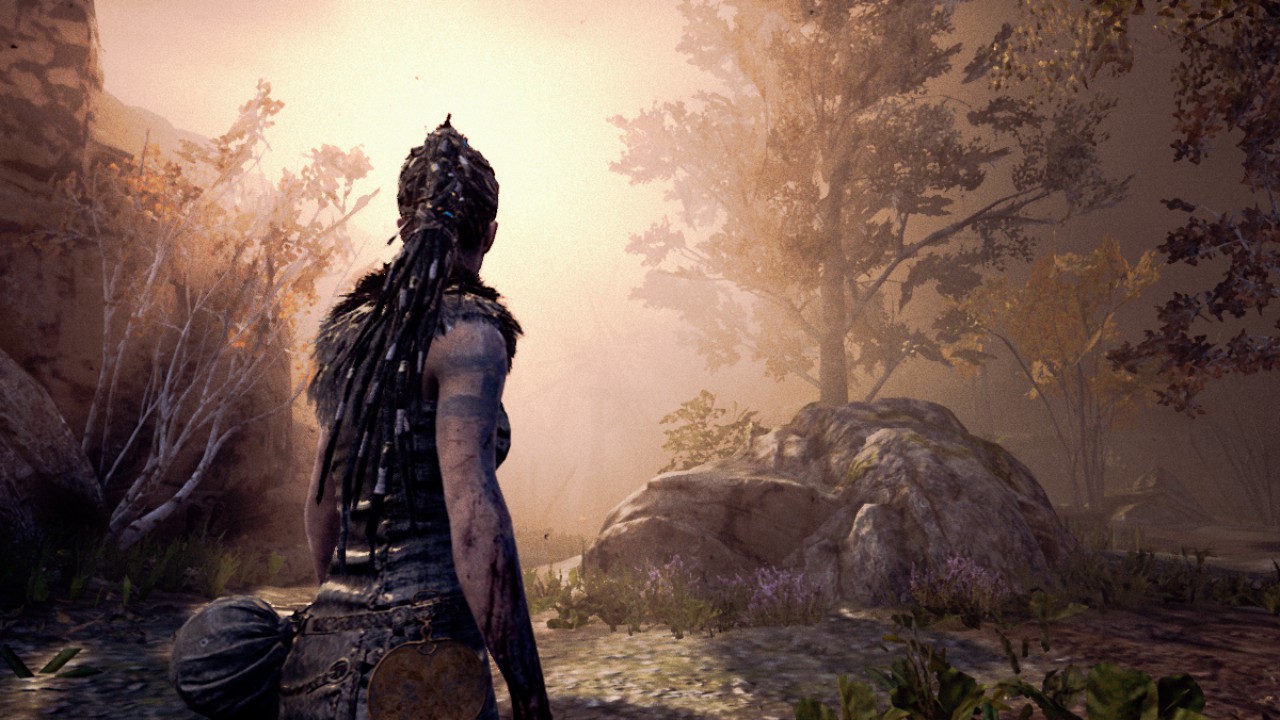 Nintendo Switch screenshot taken by Alex Rowe.
Nintendo Switch screenshot taken by Alex Rowe.
Miraculously, most of this detail is retained in the Nintendo Switch conversion. The resolution is a little bit lower, but effective anti-aliasing helps keep jagged edges out. Draw distances for some of the small clutter objects are pared back. Textures and shadows are reduced in resolution, but without destroying their fidelity too badly. And as mentioned above, some of the cutscenes are actually video clips, but I only noticed the cross-dissolve that links them a couple of times.
The game runs at a solid clip on the Switch, and aside from looking soft now and then, it?s the closest I?ve seen a Switch port come to a PS4-level game so far. It retains the extensive reflection effects even in handheld mode, a graphical feature that so many other Switch ports have cut. It?s a testament to the original quality of the game, to the flexibility of Unreal Engine 4, and to some stellar porting decisions made by the conversion team at QLoc.
I know it?s popular to talk about how Witcher 3 is an achievement on the Switch, and it definitely is?but with Hellblade, you don?t need to worry that you?re getting an inferior technical experience if you decide to play on Nintendo?s console. The Witcher is more compromised on a relative scale than Hellbade. Same thing goes for Doom and Wolfenstein.
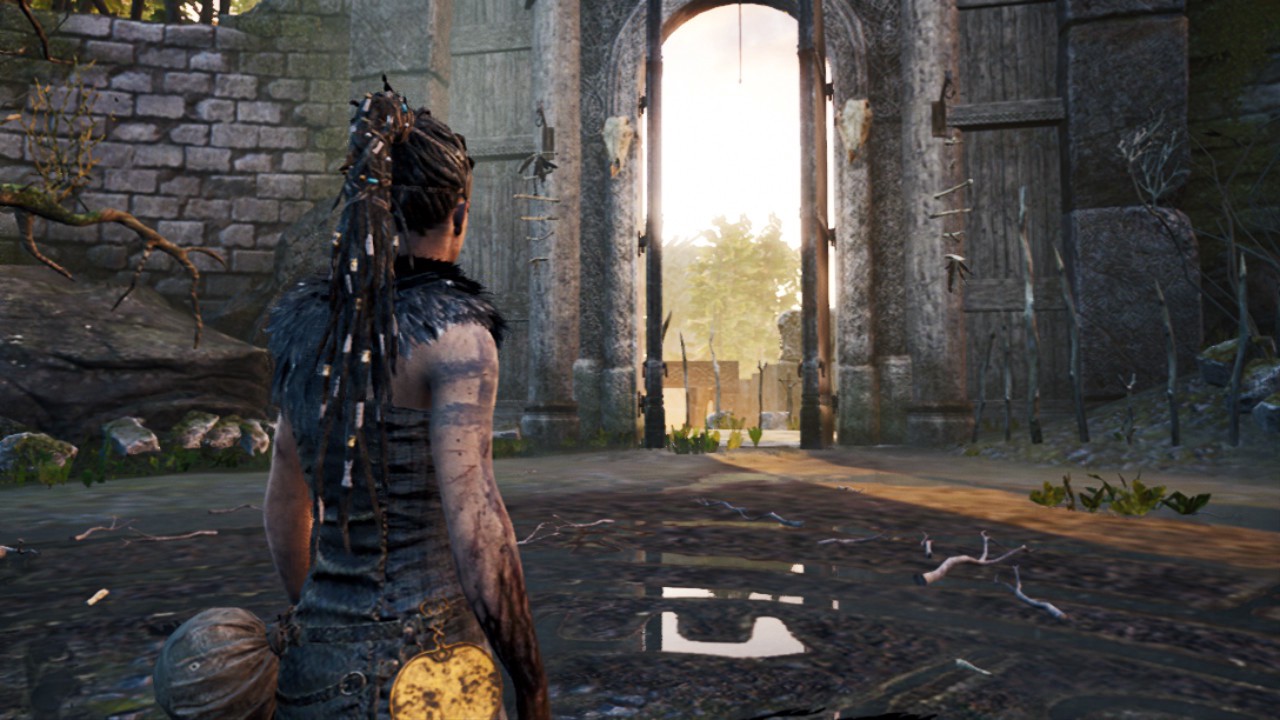 Nintendo Switch screenshot taken by Alex Rowe.
Nintendo Switch screenshot taken by Alex Rowe.
SOUND
Hellblade has some of my favorite sound design in a video game since the Dead Space franchise.
As you might be aware, I?m a big fan of headphones. Hellblade?s audio is designed principally for headphone listening, and it?s presented in true 3D binaural audio. Binaural recording is a well-established technique where sound is captured with microphones placed inside a replica head?s ear canals. This allows the mics to pic up sound in a very similar way to real human ears. When these recordings are played back over headphones, you get an instantly-convincing 3D effect with a full field of both depth and height.
All of the voices that Senua hears in her head were recorded by actors surrounding a binaural rig, and the rest of the game audio is processed to properly play back in this format as well. The result is a 3D soundstage that?s tremendously convincing. You?ll still get a solid aural experience over speakers, but the best sound in Hellblade comes via headphones.
That 3D sound isn?t just a cool gimmick here. It?s used to put you directly into the mindset of Senua, and place you in the center of the breathtaking and terrifying world she journeys through. The voices frequently comment about what?s happening on screen, giving you important feedback and context without slowing down the action.
It?s both a dramatic argument in favor of headphone-based 3D audio, and a profound example of just how much sound can enhance gameplay design. I?d hesitate to say it has the best sound design I?ve ever experienced in a game, but I?d happily say it?s in the top five.
 Nintendo Switch screenshot taken by Alex Rowe.
Nintendo Switch screenshot taken by Alex Rowe.
FINAL THOUGHTS
Hellblade: Senua?s Sacrifice left me wanting a little more in the best possible way. It?s a small, intimate, well-designed game that executes every aspect to the limit except for its boss battles, and I?m wary that its sequel will lose that focus and charm.
I was pretty satisfied with the story when I reached the ending, and eagerly downloaded it again on PC to start it all over again.
Hellblade was an anomaly when it launched, and it remains so today. It?s a seven hour game in a world full of infinitely-extended live service experiences. It feels like a throwback to games that were hyper-common on the PlayStation 2. You couldn?t walk through a game store in 2005 without tripping over a number of quality, middle-length action games that had a fun story to tell.
It was tremendous fun to play that sort of game again. Ninja Theory even priced the game below the $60 standard, though there?s enough technical achievement here to have warranted a higher price.
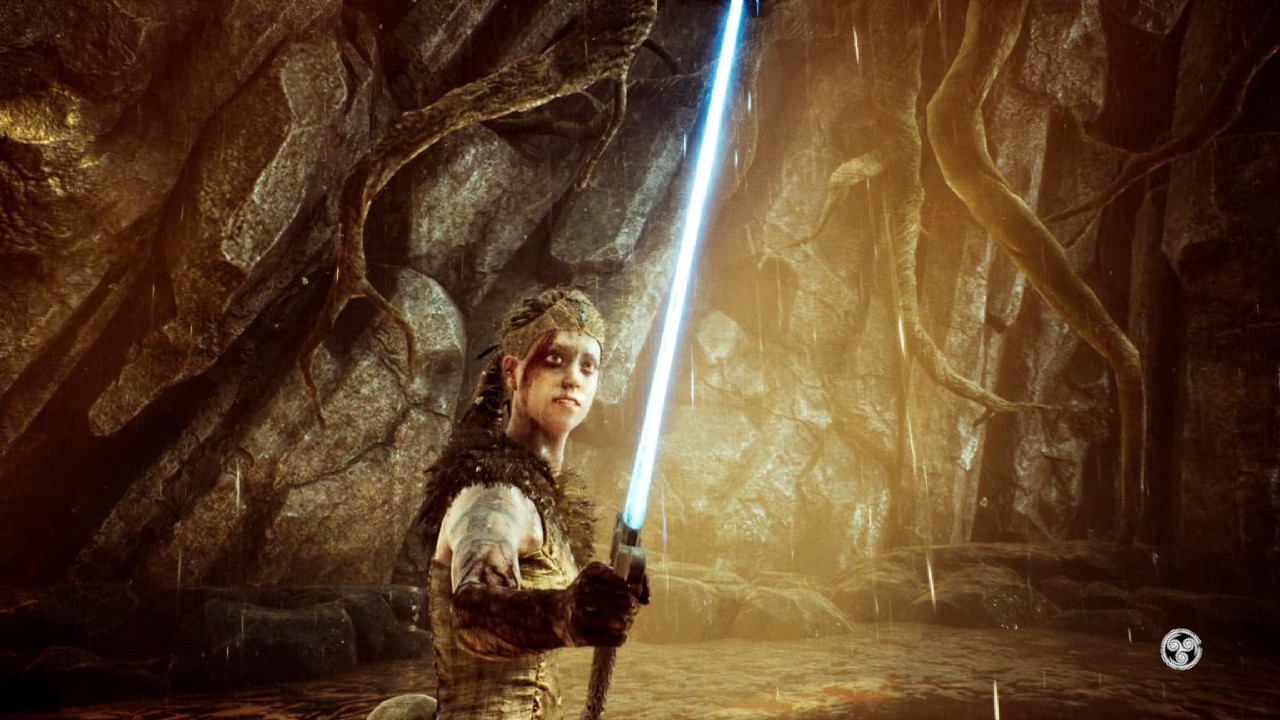 Nintendo Switch screenshot taken by Alex Rowe.
Nintendo Switch screenshot taken by Alex Rowe.
Hopefully, the upcoming sequel will deliver on the small intimate design that worked so well here in spite of its access to Microsoft?s immense cash resources. I?d hate to see it fall victim to a vast open world with endless battles and dungeons to explore, in spite of my love for that style of game.
The game industry may very well learn the wrong lessons from the success of Hellblade, filling future games with 3D sound and realistic characters and missing the true genius of its pacing and focus. I watched some of that bad learning happen with the two sequels to Crystal Dynamics? Tomb Raider(2013), and I?m fearful it?ll happen to Senua?s next adventure as well.
Hellblade is still more than worth playing in 2020, and if you want to see just how awesome your Switch can be, you won?t be disappointed.
